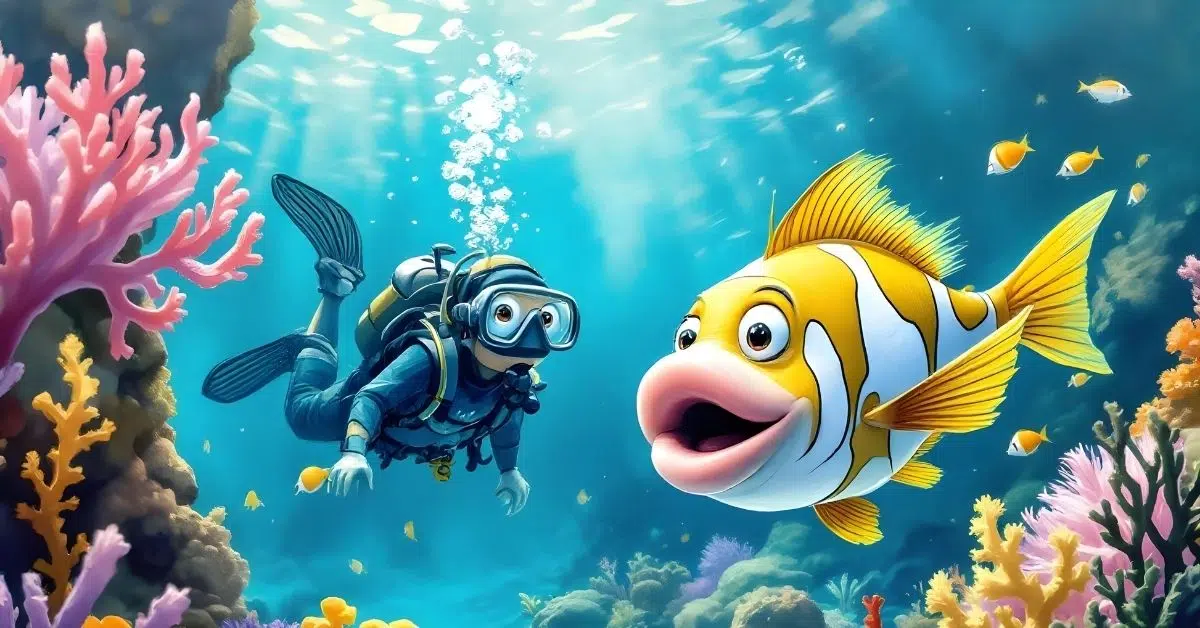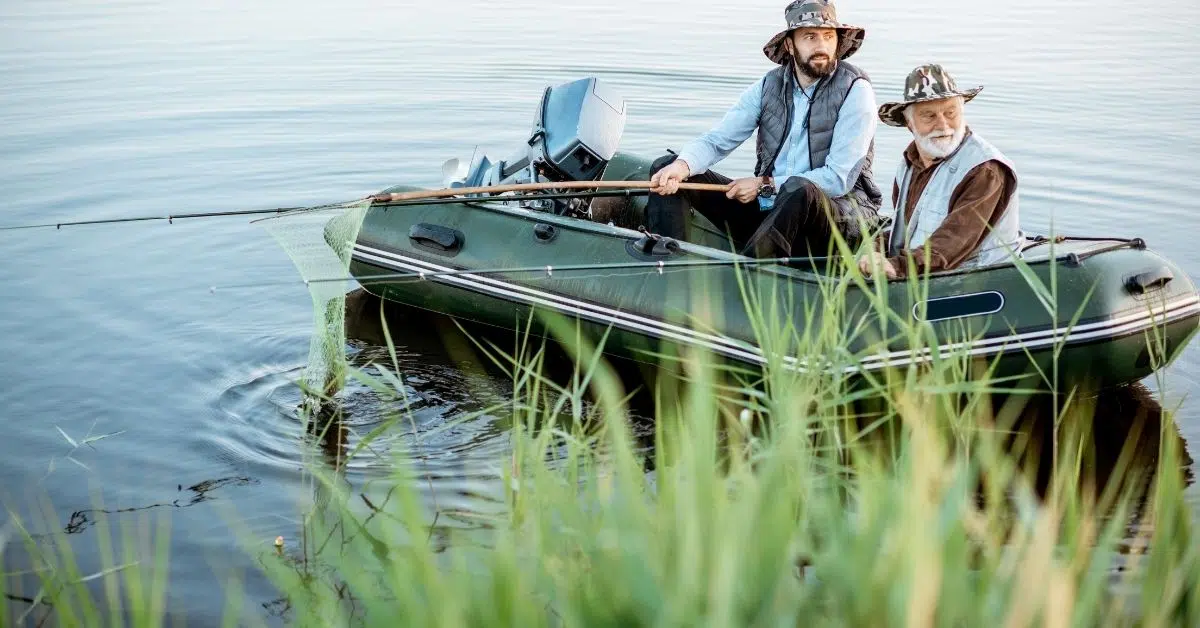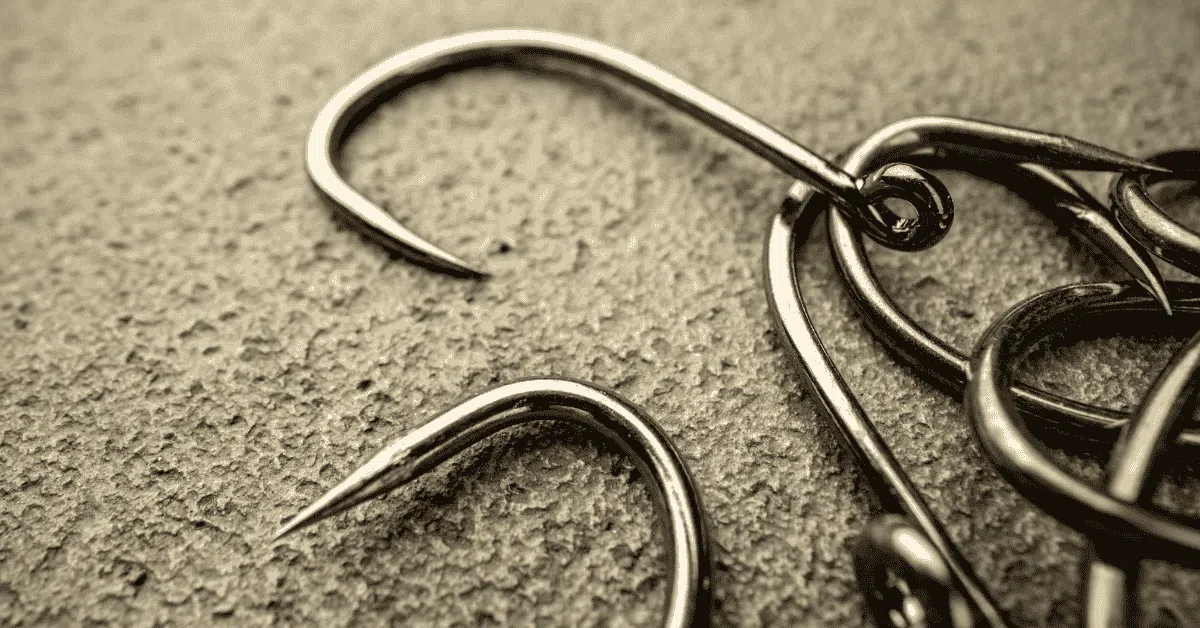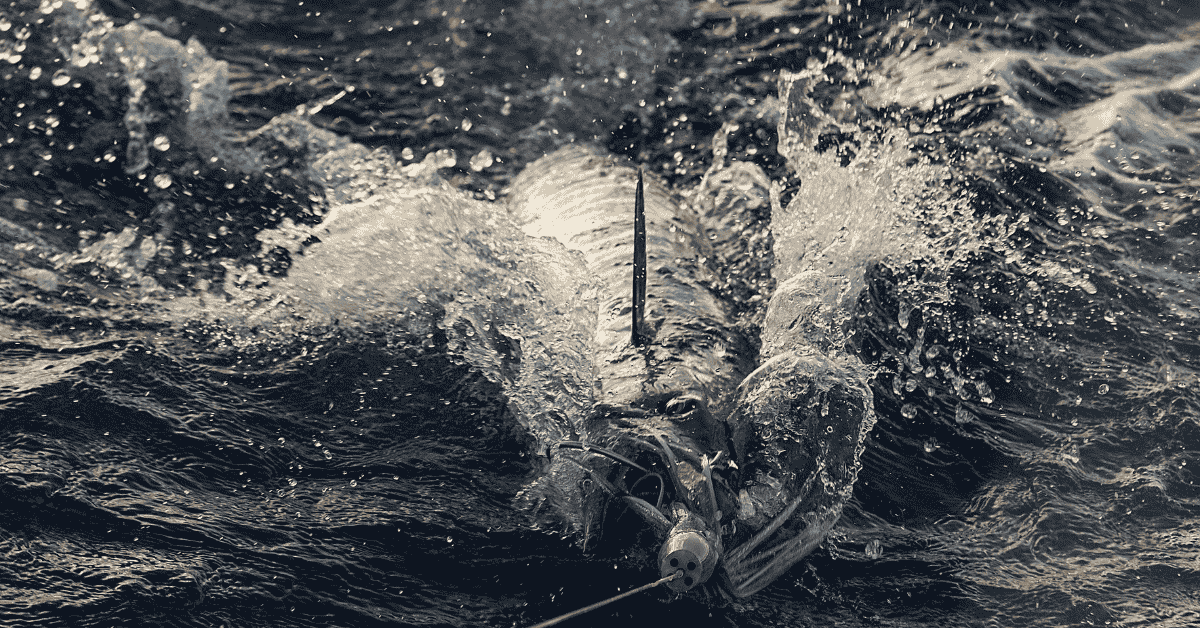We have seen fish with big lips in animation or cartoons. Such fish also exist in reality. There are countless beautiful, ugliest animals and species of fish in the world, and all types of fish have their characteristics.
Fish lips have different shapes. Many fish species have large big lips and large beaks relative to their sizes. Ten such popular big-lip fish are discussed below.
Sort Brief of Article
ToggleWhich Fish has Big Lips
- koi
- Pacu
- Piranha
- Paddletail snapper
- Carp
- Sweetlips
- Marine angelfish
- Triggerfish
- Humphead wrasse
- Napoleon fish
Koi
Koi is the most popular fish species among the fish with big lips. Scientific name “Cyprinus rubrofuscus var”. Koi is a subspecies of common carp. They are usually 1-3 feet. These fish are recorded to live up to 40 years.
They are native to East Asia but are also found in other places, including North America, Australia, and Europe. This freshwater lips fish bass comes in various colors and patterns. These fish also have barbels around their mouths that can help them navigate and find prey in murky waters.
Pacu
The lips pacu fish is found only in South America. Its scientific name is Piaractus brachyurous. These fish can grow to over three feet in length and weigh over fifty pounds. Their large size and unique appearance make them desirable aquarium inhabitants. This fish is capable of digesting all types of food. It eats a variety of foods to get a full spectrum of nutrients.
Piranha
Another fish with big lips is the piranha. This fish is a member of the Serrasalmidae family. This fish is native to South American rivers, including the Amazon River. These fish usually use their spiky teeth to attack anything they encounter. Because of this, the piranha is generally characterized as an aggressive, dangerous fish.

Piranhas are primarily carnivores. They can easily tear the flesh of their prey with strong jaws and sharp teeth. Piranhas are typically found in two types: the black piranha and the red-bellied piranha. Both can grow up to 18 inches in size and 8 pounds in weight. Piranhas usually hunt in small groups.
They eat small fish, mammals, insects, and occasionally fruits/vegetables. Attacks on large animals, including cows and humans, have also been reported. But this is rare.
Paddletail Snapper
The paddle-tail snapper is a species of ray-finned fish in the family Lutzanidae. This big-lip fish is found in the Indo-Pacific region from the Red Sea to Samoa. It can grow up to 60 cm in length and has a silvery body with dark vertical bars. Like piranha fish, it is carnivorous.

Carp
Carp scientific name (Cyprinus carpio) is another big lips fish. This fish is native to Europe and Asia.
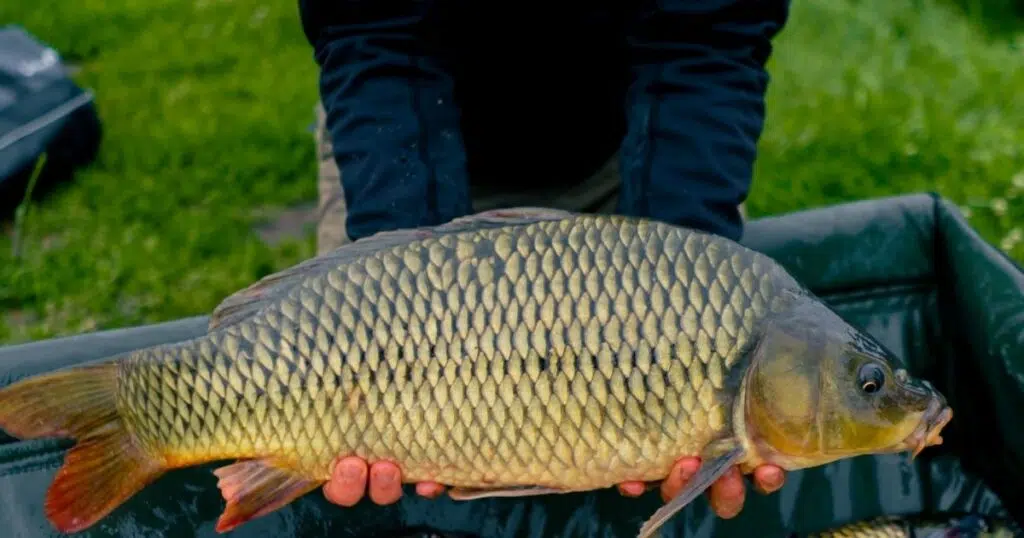
These lips fish are prized by anglers for their fighting ability and are a popular target for sport fishing. Carp are generally omnivores.
The diet of this fish consists of both plant and animal matter. It also eats small fish and amphibians. Carp in lakes and ponds often uproot aquatic plants in search of food. Many animals depend on plants for shelter and food, and carp can cause problems for those animals.
Sweetlips
The most notable feature of the sweetlip fish is its big lips, which become swollen with age. These fish are closely related to groupers and inhabit the coral reefs of the Indo-Pacific. Sweetlips’ attractive appearance makes them a popular choice in marine aquariums. These fish use their big lips to suck food from the sea floor.

There are many species of sweetlips, all with different colors, growth rates, and patterns.
These fish are omnivores that primarily feed on mollusks, invertebrates, crustaceans, and wild algae.
Marine Angelfish
Marine angelfish are native to the Amazon River and come in three species: Pterophyllum leopoldi, Pterophyllum altum, and Pterophyllum scalare. Freshwater angelfish are carnivores. So this fish needs a lot of protein in its diet.
Angelfish can be fed high-quality fish flakes or pellets. Live and frozen foods such as brine shrimp, bloodworms, and mosquito larvae can also be fed to this fish. This fish has a diamond-shaped body as well as a sizable beak-like beak.
Angelfish are commonly owned in freshwater aquariums because of their unique and colorful appearance.
Triggerfish
The lips triggerfish is an interesting species of marine fish. There are many species of this fish, all of which boast bright colors and markings.

Most species of triggerfish are peaceful, but several can be very territorial, especially during mating season. This big-lip fish has a large spine on its dorsal fin, which can act like a trigger to lock other fish in place. Triggerfish are found worldwide in tropical and subtropical waters. Due to their stunning appearance, triggerfish are also popular aquarium fish.
Humphead wrasse
Humphead wrasse fish usually have big lips. The scientific name of this fish is (Cheilinus undulatus). It is known to eat small fish, echinoderms, and even turtles! Humphead wrasse are large, brightly colored fish found on coral reefs in India Humphead wrasse get their name from the large hump on their heads, which are used to break open hard shells to eat crustaceans and mollusks.
These fish can grow up to six feet long and weigh up to 400 pounds. These big lips fish are generally carnivorous.

Napoleon fish
Napoleon fish is a species of ray fish. Its scientific name is (Cheilinus undulatus). This fish is found in the Indo-Pacific region.
It is also known as Maori Russe, Napoleon Russe, or simply Napoleon. These fish are generally carnivorous, consisting primarily of small fish, crustaceans, and mollusks. Napoleon can eat up to 30% of its body weight in one day. Adult Napoleon fish can grow up to two feet long and are distinguished by their bright blue color and large, protruding forehead. This fish is considered one of the most important commercial fisheries in the Indo-Pacific region.
Giant Grouper
The giant grouper is one of the largest bony fish species in coral reefs. It can grow up to 9.8 feet in length and weigh over 800 pounds. Adult giant grouper is usually olive-gray. These species are found in the Indo-Pacific region, from the Red Sea to Hawaii, Australia, and southern Japan.
The giant grouper inhabits shallow reefs, caves, wrecks, and depths from a few feet to 300 feet (about 100 meters). It is currently classified as endangered due to habitat destruction and overfishing.
This fascinating but endangered species plays an important role in its marine ecosystem. Thanks to its impressive size, unique feeding habits, and reproductive strategy, the giant grouper is an essential subject for conservation efforts.
Napoleon fish is a species of ray fish. Its scientific name is (Cheilinus undulatus). This fish is found in the Indo-Pacific region. It is also known as Maori Russe, Napoleon Russe, or simply Napoleon. These fish are generally carnivorous, consisting primarily of small fish, crustaceans, and mollusks. Napoleon eats up to 30% of their body weight in one day.
The lips of each fish are usually different based on how a fish hunts and eats its food. For example, wolf eels prey on sea urchins, crabs, and other crustaceans.
The largest fish in the world is Rhynchodon typus or the whale shark. Despite their large size and intimidating appearance, these fish are generally docile and approachable
Large-mouth fish usually eat copepods, cladocerans, bottom plants, aquatic insects, small fish, and fish eggs.
Paedocypris progenetica is the smallest fish in the world. This fish lives in forest swamps on the Indonesian island of Sumatra.
The fastest fish is the Indo-Pacific sailfish, Istiophorus platypterus. In short bursts, it reaches speeds of over 110 km/h (68 mph).

